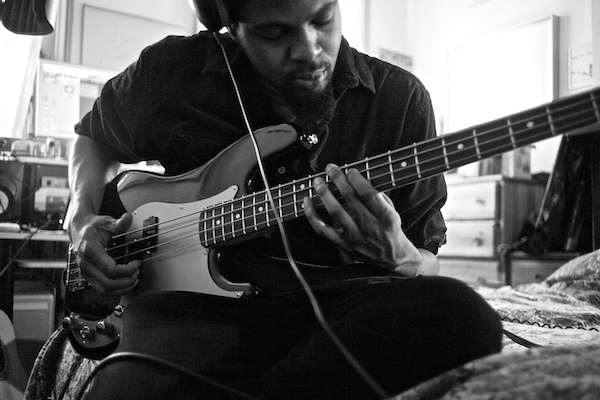Oct 28, 2025 10:47 AM
In Memoriam: Jack DeJohnette, 1942–2025
Jack DeJohnette, a bold and resourceful drummer and NEA Jazz Master who forged a unique vocabulary on the kit over his…

Bassist Luke Stewart is among the 25 artists DownBeat thinks will help shape jazz in the decades to come.
(Photo: TSE)The very act of identifying Luke Stewart’s latest project is exhausting. Rarely is there just one.
The prolific bassist began building an international reputation in 2014, when he became a member of tenor saxophonist James Brandon Lewis’ working trio. By that time, however, he was well established as both an artist and a presenter in Washington, D.C., where he arrived at age 19. Gifted and determined, Stewart began to shape the city’s artistic landscape. A cofounder of the jazz advocacy organization CapitalBop, he helped to create a thriving independent scene for jazz and experimental music in a metropolis that didn’t have the institutional infrastructure of New York, Chicago or New Orleans.
Though all his recording projects—including the recent leader date Exposure Quintet (Astral Spirits)—involve free improvisation, they are remarkably diverse. But Stewart doesn’t recalibrate his approach each time out. For him, the new setting provides the direction.
“I want to be totally present for each band,” he said. “Each band is different, and my role in each is different. So, of course I’m going to think about them all differently. If there’s an overriding theme, it might be just following the music.”
That’s not to say that Stewart has no set aesthetic principles. In fact, Exposure Quintet embodies a primary one. All five of its tracks are his compositions, in the sense that he organized them—but he did so by picking out themes, motifs and other frameworks from recordings of the band’s improvisations. The goal is to dissolve the barriers between composer and improviser, especially those that assign greater value to one than the other.
If there’s a hint of the revolutionary in Stewart’s talk of abolishing hierarchies, that’s no coincidence, considering his views on sociopolitical issues in 2020: “During this time, everything’s up for review—even the fundamental basis of how we perceive music, and some of the oppressive influences that have been imposed on those perceptions.” DB
This story originally was published in the November 2020 issue of DownBeat. Subscribe here.

Jack DeJohnette boasted a musical resume that was as long as it was fearsome.
Oct 28, 2025 10:47 AM
Jack DeJohnette, a bold and resourceful drummer and NEA Jazz Master who forged a unique vocabulary on the kit over his…

Goodwin was one of the most acclaimed, successful and influential jazz musicians of his generation.
Dec 9, 2025 12:28 PM
Gordon Goodwin, an award-winning saxophonist, pianist, bandleader, composer and arranger, died Dec. 8 in Los Angeles.…

D’Angelo achieved commercial and critical success experimenting with a fusion of jazz, funk, soul, R&B and hip-hop.
Oct 14, 2025 1:47 PM
D’Angelo, a Grammy-winning R&B and neo-soul singer, guitarist and pianist who exerted a profound influence on 21st…

Flea has returned to his first instrument — the trumpet — and assembled a dream band of jazz musicians to record a new album.
Dec 2, 2025 2:01 AM
After a nearly five-decade career as one of his generation’s defining rock bassists, Flea has returned to his first…

To see the complete list of nominations for the 2026 Grammy Awards, go to grammy.com.
Nov 11, 2025 12:35 PM
The nominations for the 2026 Grammy Awards are in, with plenty to smile about for the worlds of jazz, blues and beyond.…





